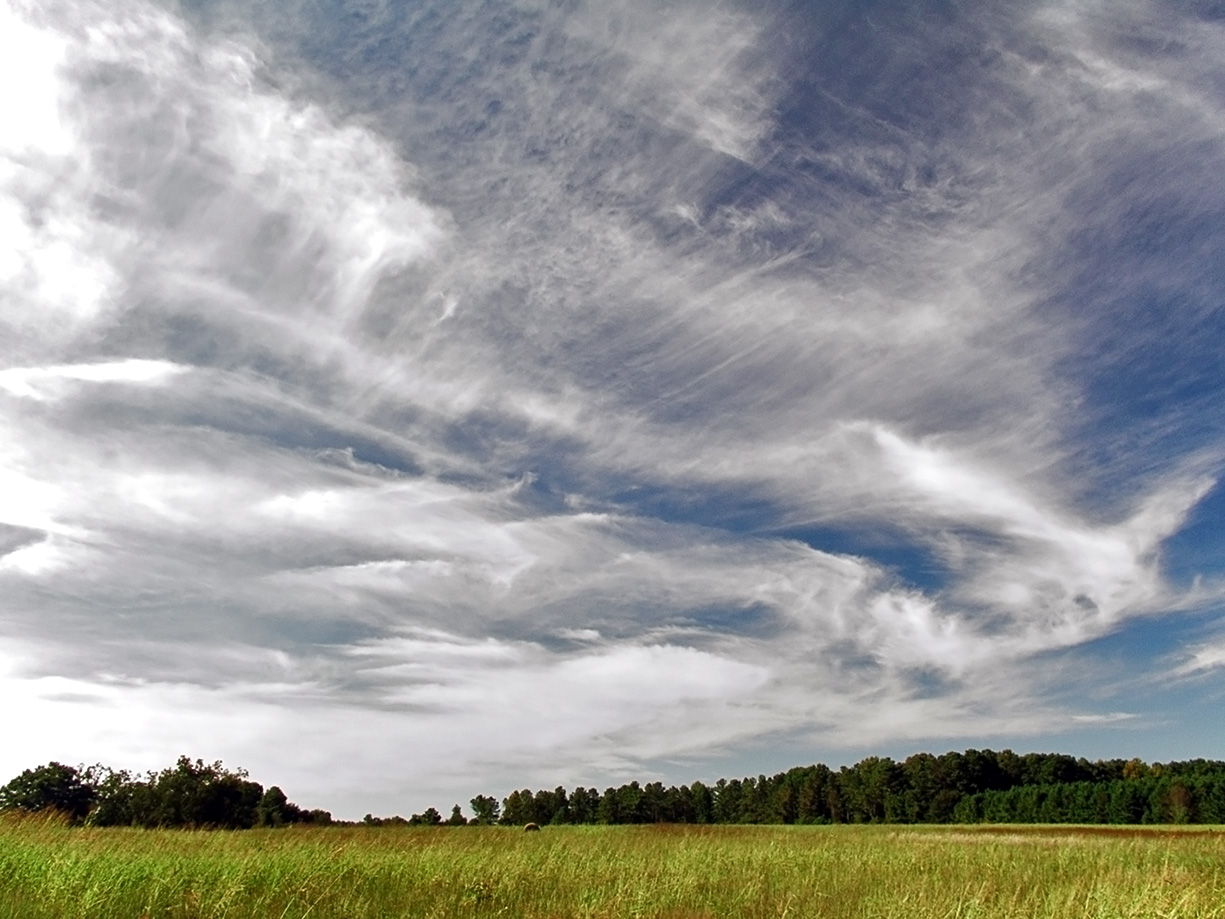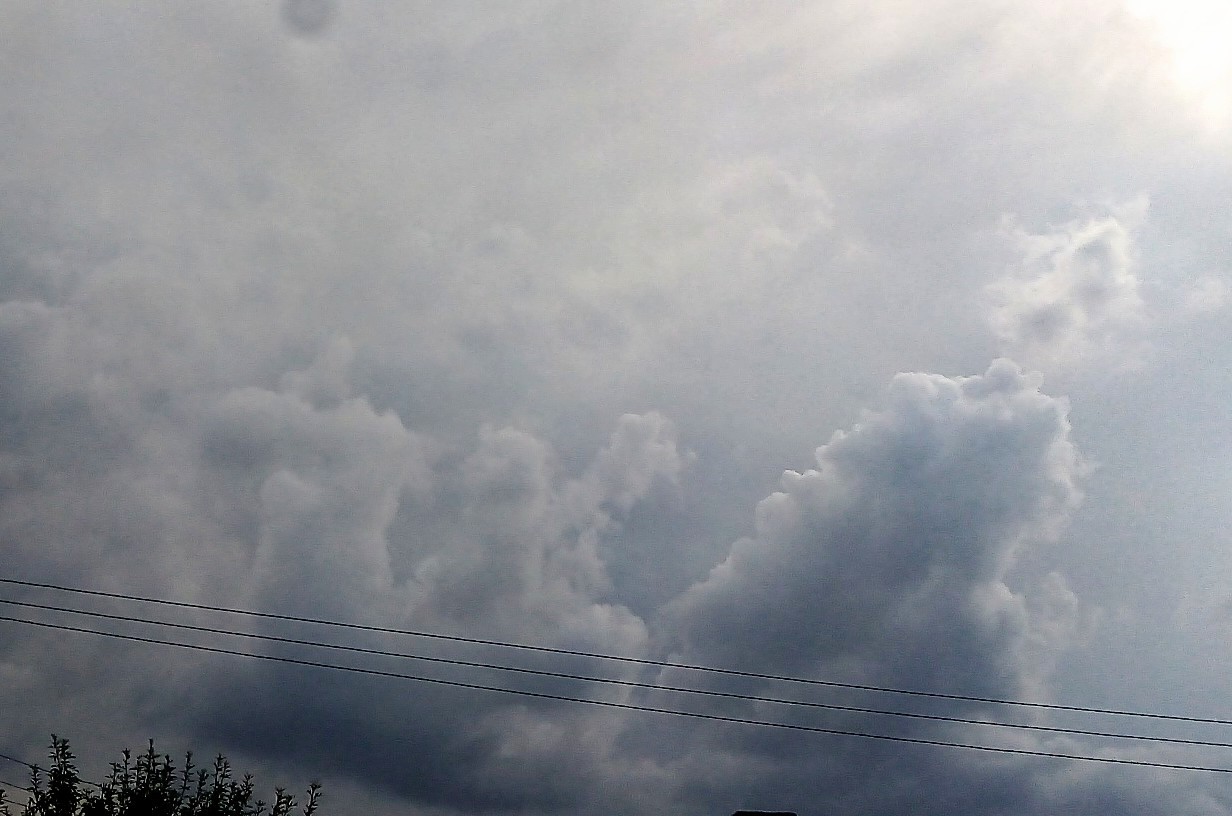|
Cirrus Castellanus
Cirrus castellanus or Cirrus castellatus is a species of cirrus cloud. Its name comes from the word ''castellanus'', which means ''of a fort'', ''of a castle'' in Latin. Like all cirrus, this species occurs at high altitudes. It appears as separate turrets rising from a lower-level cloud base. Often these cloud turrets form in lines, and they can be taller than they are wide. This cloud species is usually dense in formation. See also *List of cloud types The list of cloud types groups all genera as ''high'' (cirro-, cirrus), ''middle'' (alto-), ''multi-level'' (nimbo-, cumulo-, cumulus), and ''low'' (strato-, stratus). These groupings are determined by the altitude level or levels in the troposphe ... References External linksInternational Cloud Atlas - Cirrus fibratus Cirrus {{Cloud-stub ... [...More Info...] [...Related Items...] OR: [Wikipedia] [Google] [Baidu] |
Cirrus Cloud
Cirrus ( cloud classification symbol: Ci) is a genus of high cloud made of ice crystals. Cirrus clouds typically appear delicate and wispy with white strands. Cirrus are usually formed when warm, dry air rises, causing water vapor deposition onto rocky or metallic dust particles at high altitudes. Globally, they form anywhere between above sea level, with the higher elevations usually in the tropics The tropics are the regions of Earth surrounding the Equator. They are defined in latitude by the Tropic of Cancer in the Northern Hemisphere at N and the Tropic of Capricorn in the Southern Hemisphere at S. The tropics are also referr ... and the lower elevations in more Polar regions of Earth, polar regions. Cirrus clouds can form from the tops of cumulonimbus cloud, thunderstorms and tropical cyclones and sometimes predict the arrival of precipitation, rain or storms. Although they are a sign that rain and maybe storms are on the way, cirrus themselves drop no more ... [...More Info...] [...Related Items...] OR: [Wikipedia] [Google] [Baidu] |
Castellanus
A castellanus (or castellatus) (from latin ''castellanus'', castle) is a cloud that displays at least in its upper part cumuliform protuberances having the shape of turrets that give a battlement, crenellated aspect. Some of these turrets are higher than they are wide; they have a common base and seem to be arranged in a line. The castellanus characteristic is particularly obvious when the clouds are observed from the side (i.e., from a vantage point on a line perpendicular to the line of orientation). It is a cloud species attached to the cloud genus, cloud genera Cirrus castellanus, cirrus, Cirrocumulus castellanus, cirrocumulus, Altocumulus castellanus cloud, altocumulus and stratocumulus. Species of the clouds include cirrus castellanus, cirrocumulus castellanus, altocumulus castellanus and stratocumulus castellanus. Sometimes cumulus castellanus are referred to, but the type is not recognised by France's national meteorological service Météo-France, or by the American Mete ... [...More Info...] [...Related Items...] OR: [Wikipedia] [Google] [Baidu] |
Latin
Latin (, or , ) is a classical language belonging to the Italic branch of the Indo-European languages. Latin was originally a dialect spoken in the lower Tiber area (then known as Latium) around present-day Rome, but through the power of the Roman Republic it became the dominant language in the Italian region and subsequently throughout the Roman Empire. Even after the fall of Western Rome, Latin remained the common language of international communication, science, scholarship and academia in Europe until well into the 18th century, when other regional vernaculars (including its own descendants, the Romance languages) supplanted it in common academic and political usage, and it eventually became a dead language in the modern linguistic definition. Latin is a highly inflected language, with three distinct genders (masculine, feminine, and neuter), six or seven noun cases (nominative, accusative, genitive, dative, ablative, and vocative), five declensions, four verb conjuga ... [...More Info...] [...Related Items...] OR: [Wikipedia] [Google] [Baidu] |
Cloud Base
A cloud base (or the base of the cloud) is the lowest altitude of the visible portion of a cloud. It is traditionally expressed either in metres or feet above mean sea level or above a planetary surface, or as the pressure level corresponding to this altitude in hectopascals (hPa, equivalent to the millibar). Measurement The height of the cloud base can be measured using a ceilometer. This device reflects a beam of light off the cloud base and then calculates its distance using either triangulation or travel time. Alternatively, the cloud base can be estimated from surface measurements of air temperature and humidity by calculating the lifted condensation level. One method for doing this, used by the U.S. Federal Aviation Administration and often named after Tom Bradbury, is as follows: #Find the difference between the surface temperature and the dew point. This value is known as the "spread". #Divide the spread by 4.4 (if temperatures are in °F) or 2.5 (if temperatures are i ... [...More Info...] [...Related Items...] OR: [Wikipedia] [Google] [Baidu] |
List Of Cloud Types
The list of cloud types groups all genera as ''high'' (cirro-, cirrus), ''middle'' (alto-), ''multi-level'' (nimbo-, cumulo-, cumulus), and ''low'' (strato-, stratus). These groupings are determined by the altitude level or levels in the troposphere at which each of the various cloud types is normally found. Small cumulus are commonly grouped with the low clouds because they do not show significant vertical extent. Of the multi-level genus-types, those with the greatest convective activity are often grouped separately as ''towering vertical''. The genus types all have Latin names. The genera are also grouped into five physical forms. These are, in approximate ascending order of instability or convective activity: ''stratiform'' sheets; ''cirriform'' wisps and patches; ''stratocumuliform'' patches, rolls, and ripples; ''cumuliform'' heaps, and ''cumulonimbiform'' towers that often have complex structures. Most genera are divided into ''species'' with Latin names, some of which are c ... [...More Info...] [...Related Items...] OR: [Wikipedia] [Google] [Baidu] |


